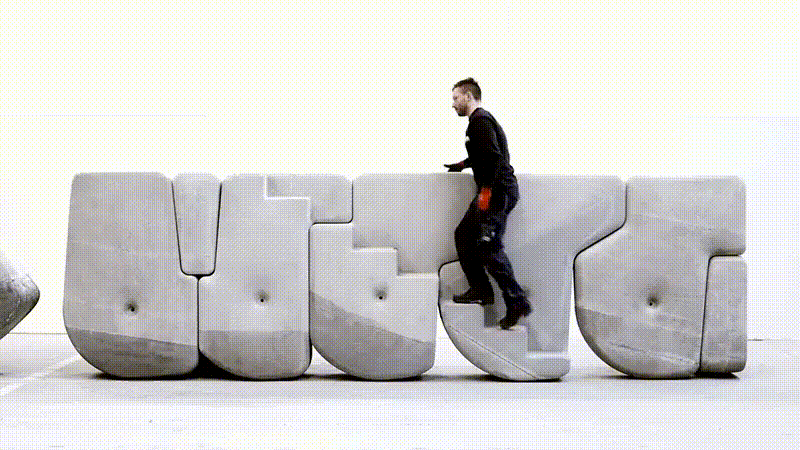Concrete blocks, expanding ideas about the ancient construction

How did centuries before the invention of cranes and trucks create ancient structures like Stonehenge or the statues of Moai on Easter Island? In their new experiment, researchers at the Massachusetts Institute of Technology (MIT) created concrete structures weighing about 25 tons, which, despite their weight, can be moved manually. Thus, a new argument appeared in favor of the theory, according to which the ancient builders were masters of balance and skillfully used levers.
Studio Matter Design (co-founded by Brandon Clifford - Associate Professor MIT) together with CEMEX - a company specializing in the development of building materials, has developed a batch of impressive monoliths from which larger structures can be built like giant building blocks. Despite the multi-ton weight and age-old strength, concrete blocks have a unique composition and shape, which allows even one person to move them relatively easily.
There are several different approaches to the appearance of the elements, which were called massive masonry units. They were created from concrete of different density: in order to be able to fully control the center of gravity, adding stability and balance. Despite the fact that the shape of each of the blocks seems random, they are created with specially arranged bevels, rounded edges, turning points, handles and connecting protrusions. The resulting blocks are still too heavy for a person to lift them. At the same time, they can be rocked, rotated around its axis, tilted, moved and even rolled from place to place - with extraordinary ease and precision.
')

So yes, the assumption that the 82-ton Moai statues were manually moved across Easter Island to their final sites is plausible. However, the experiment is more important, in addition to the fact that it supports the hypothesis. Taking into account the modern achievements in the field of 3D printing, especially large-scale , the described approach can be used to create durable structures in places where the use of trucks and construction cranes is too expensive or completely inaccessible. Where there is a threat of flooding or in a place where water has already risen, concrete walls can easily be constructed by local residents. Heavy, impenetrable barriers can be quickly moved to where there is a threat and there is no time for building more thoughtful structures. Maybe someday you yourself will assemble your new home like a giant Lego. Just throw a couple of blankets and the concrete walls won't seem so cold.
Source: https://habr.com/ru/post/448886/
All Articles